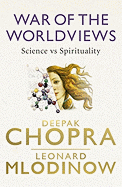What does your BINDI say about you?

When an Indian woman decorates her forehead with sindoor or bindi, she is just following a tradition that goes back atleast 5000 years. Wear a bindi or a decorative mark on your forehead and you will never go unnoticed as it is very eye-catching. It is no wonder that bindi has found its way to the international fashion world. In fact the Bindi is one of India’s best recognized symbols in the world. If you wear a bindi what does it say about you? Is it merely a decoration or is there more to it?
An Indian proverb says “A woman’s beauty is multiplied 1,000 times when she wears a bindi”. For many Indian women, getting dressed for a special occasion is incomplete without the bindi. As traditions have it, when a traditional Indian woman grooms herself in a lavish Indian way, she gives special importance to decorating her forehead with the bindi. But with modern day bindi stickers, this has been made easy and only for decoration.
For generations, bindi has been the most visually attractive of all forms of body decoration. In fact, in the 16 decorations for personal grooming (solah-shrung?r), bindi is the first shrungaar and has a strong religious implication.
But first – what does the word ‘bindi’ mean? Like the various aspects of authentic Indian culture, the bindi carries with it a wealth of meaning. Bindi is derived from the sanskrut word ‘bindu’, which means dot. Bindi is also known as ‘sindoor’, ’tilaka’, ‘tilak’, ’tilakam’ ‘tika’ or ‘pottu’. But kumkum and sindoor are not synonymous as unmarried women use kumkum but not sindoor. The ancient name for bindi is tilaka and teeka or tikka is its distorted form.
In ancient times, small decorative leaves were used (which were made by cutting them into different shapes) and then pasted upon the forehead. The decorative leaves (patra) were also known by various names –’Patralekh?’, Patramanjari’, ‘Patrachhedya’ or ‘Patrabhanga’.
Authentic kumkum is of special significance and an essential item in all religious rituals, hence auspicious. The turmeric is dried and powdered with a lime/lemon to give the rich red colored kumkum. Every deity and every altar in San?thana dharma has red kumkum. It is red in colour as red is a known colour of power.
Is the practice of bindi really ancient? A cursory look at the ancient paintings, murals from the antiquated Ajant? or Ellora caves, R?jasthani paintings or even sculptures from the ancient temples of India, shows that the forehead of the Indian women is always found decorated with ornaments and also bindi. Cave 16 at the Ajanta caves has a mural where a princess and her lady-attendant are with a tray both wearing the bindi. Female figurines excavated at Baluchistan seem to imply application of sindoor to the partition of women’s hair in Harapp? culture.
Personal decoration practices also go back to the times of R?m?yana, the M?h?bh?rata and the Vedic period and till today they haven’t changed because they still looks “cool”. In the M?h?bh?rata, the P?ndava queen Draupadi wiped her ‘kumkum’ off the forehead in anguish at Hastin?pur.
The practice of using ‘kumkum’ on foreheads is also mentioned in Vedic religious texts, many ancient texts (Pur?nas), the Lalitha Sahasran?ma and ?di Shankara’s Soundarya Lahiri. In the famous eight verses (astakam) on the symbol of Lord Shiva called the ‘Lingashtakam’ the composer says “Kumkuma chandana lepitha lingam..” meaning “I bow before that symbol (lingam), which represents the eternal Lord Shiva, adorned by sandal paste and kumkum”. Tilaka has been mentioned in Sanskrit plays of Mah?kavi K?lidasa and other works like Panchatantra. Sant Tulsid?s mentions it in his R?mcharitm?nas at the time of the marriage between Lord Ram and Sit?.
Kumkum is also showered as an offering (kumkuma archana) during the abhisheka of a deity. In the marriage ceremony, the bridegroom till today makes a ’tilaka’ mark on the bride’s forehead as a sign of wedlock. It is called the “Sindoor Dana” ceremony and married women adorn the sindoor thereafter. Along with the Indian traditions and rituals, the personal attire and personal grooming (alankaar, shrungaar) also finds a permanent place in Indian lifestyle.
Is there a mystic element to bindi? The area where the bindi is positioned is said to be the location of the ?gnya Chakra (the subtle spiritual eye) in the language of yoga which is said to be the major nerve center in the human body. To the spiritual seeker, the tilaka made of sandalwood paste serve as a reminder of a seeker’s ultimate goal i.e. enlightenment. The tilak is applied with the prayer – “May I remember the Lord. May this pious feeling pervade all my activities. May I be righteous in my deeds.
Bindi is certainly a part of the detailed Indian shrung?r. It is a common misconception that only married Hindu women wear red bindis as a symbol of wedlock. In modern times, bindis are worn by many in South Asia and Southeast Asia, and is not restricted to Dharma based religions. These days even women from other cultures adorn a bindi.
So what does your Bindi say about you? Does it mean your culture, your religion, your ethnic identity, your marital status or is it just for decoration? It could be ‘any of the above’, ‘some of the above’ or even ‘all of the above’. Can ‘none of the above’ be an option?






